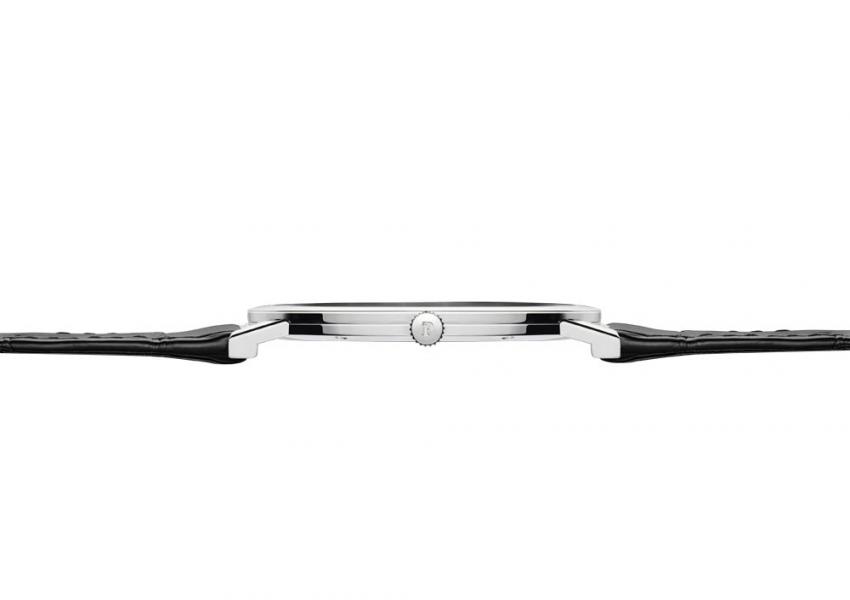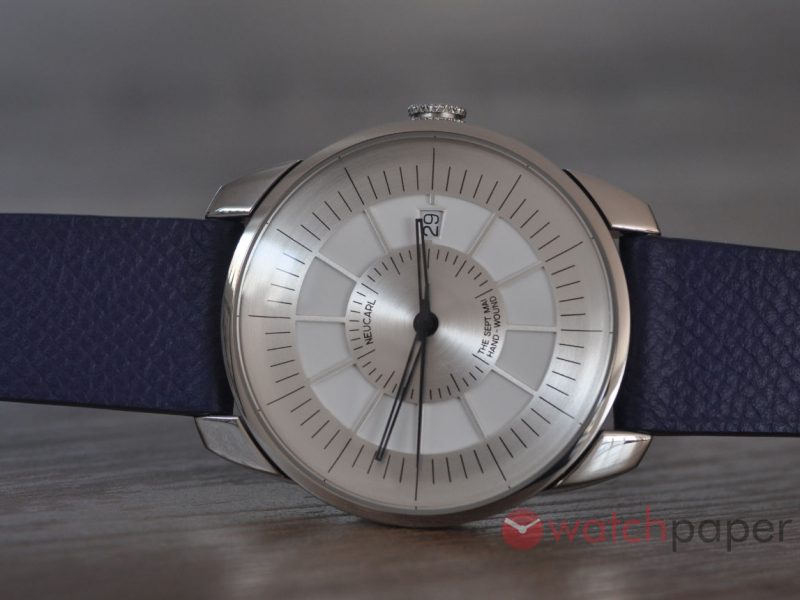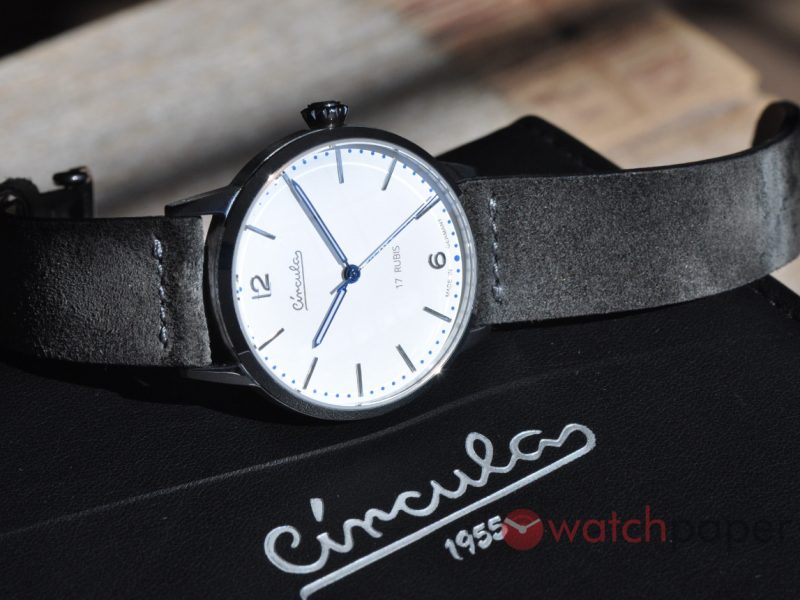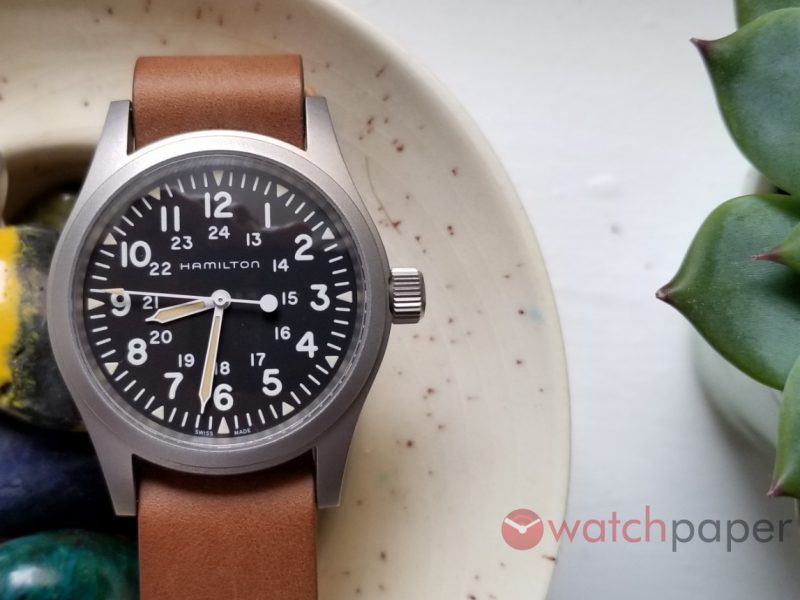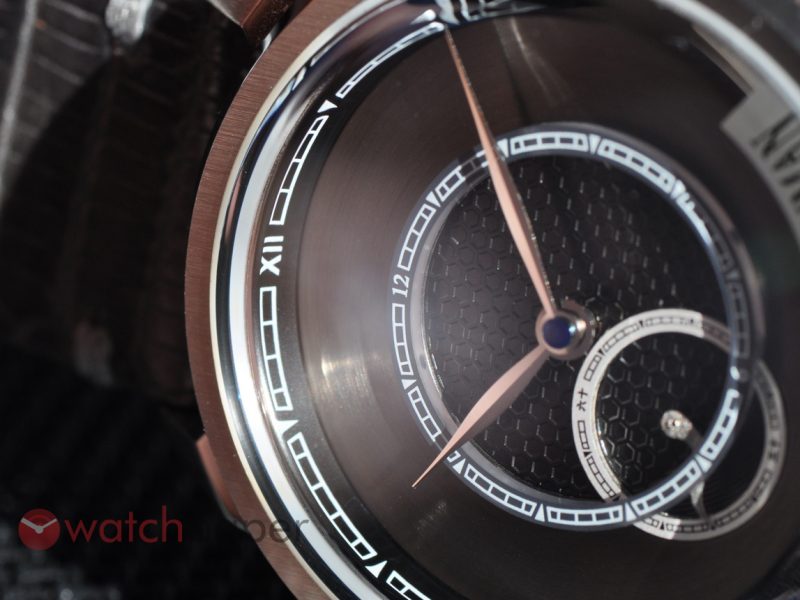Piaget Altiplano 38mm 900P
How did Piaget make a mechanical watch 3.65 mm thick, or thin to be more correct? In an innovative way, they have managed to combine the watch movement and its case into a single entity.
Piaget has a long history of building thin pieces, actually the Altiplano 38 mm 900P name refers to the Calibre 9P, which at only 2 mm, it was the first ultra-thin hand-wound movement made by Piaget in 1957.
By 1960, Piaget was ready to set a first record with its Calibre 12P, the world’s thinnest automatic movement at just 2.3 mm. The following years witnessed a spate of new slimness records in the fields of hand-wound and automatic models, with or without horological complications – like Calibre 600P, the world’s thinnest hand-wound shaped tourbillon movement; and 1208P, an automatic movement that is also the thinnest in its category, to mention just a couple of these feats.
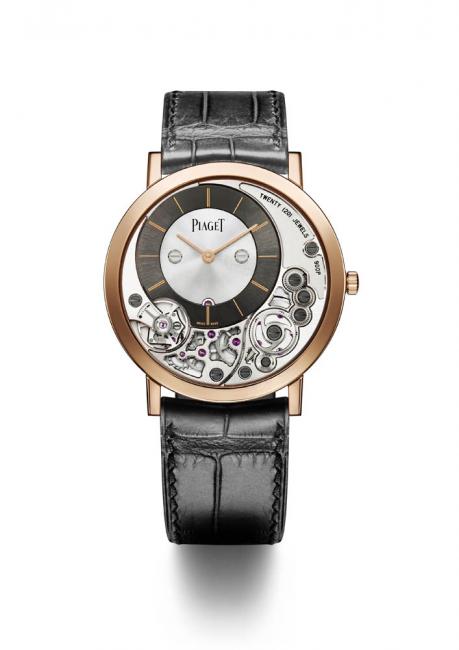
The Piaget Altiplano 38 mm 900P is designed as a single entity, merging the hand-wound calibre with the case elements.
It took three years for the Piaget watchmakers, case constructors and designers to come up with this model. Each technical choice had an aesthetic impact, and vice versa. Everything was trimmed to the max, for example, some wheels are measuring only 0.12 mm, compared to 0.2 mm in a classic movement.
A special care was accorded to the clearances between mobile and fixed components. But really, the main secret behind this achievement, lies in the structure of the case itself, of which the back also serves as the mainplate. Thereby merging calibre and case, the latter was machined directly from the case-back in order to house the mechanical parts.
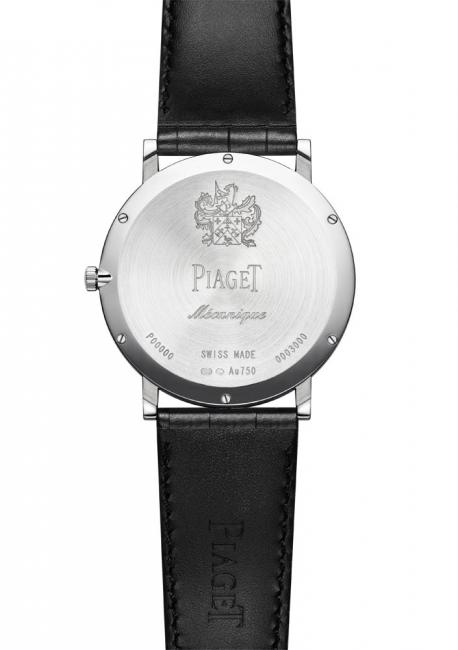
To achieve this extreme slenderness, Piaget watchmakers merged the case and the caliber. for example the back also serves as mainplate for the calibre.
A patent pending innovation
When a watch is subjected to strong pressure, its glass or crystal can deform, but for a regular watch this is not a reason for concern as there is plenty of space between the glass and the hands. With thin watches, such as the Altiplano 38 mm 900P, the glass could touch the hands causing the movement to stop. Piaget came up with a patent pending solution, to place the hands bellow the level of the bridges, this under high pressure levels, the crystal will press the wheel-train bridge instead of the hands.
More record breaking
Piaget did not stop here, they pushed the limits of horlogerie even further, by creating a Haute Joaillerie version of the Altiplano 38 mm 900P. An ultra-thin watch allows only infinitely small tolerances in preserving the volume of its lines and that of its case. The extreme thinness of the material thus leaves very little space for setting the stones.
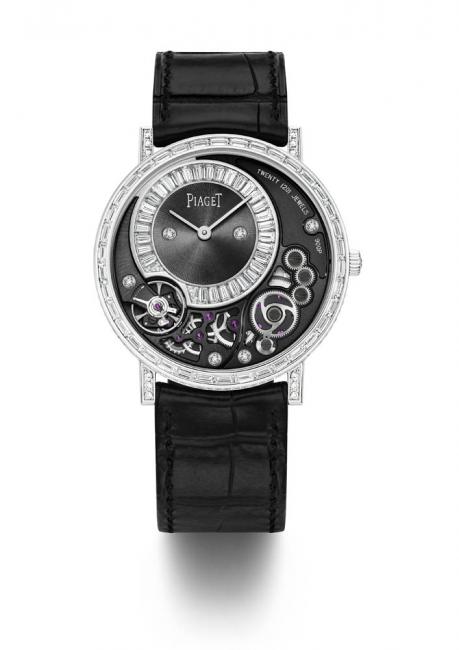
The jewellery version of the Altiplano 38 mm 900P totalling 4.71 carats sets a new record for slenderness, since it is the world’s thinnest Haute Joaillerie watch at just 5.65 mm thick.
At 4.71 carats, the Altiplano 38 mm 900P sets a new record for slenderness, being the world’s thinnest Haute Joaillerie watch at just 5.65 mm thick. 304 diamonds set the stage for subtle plays on cuts – baguette for the bezel and brilliant for the lugs and profiles. On the dial, 33 baguette-cut diamonds form the chapter ring. Piaget takes things as far as to even gem-set the screws on the bridges and wheel-trains. Proclaiming its bejewelled nature right the way through to the smallest details, the watch also features delicate gem-setting on the folding clasp of its alligator leather strap, thereby putting the ultimate finishing touch to a model that is destined to remain a highly exclusive work of art.
In a market crowded with over-sized watches, where brands are competing in who makes the largest, the thickest or the heaviest watch it’s refreshing to see a manufacturer proving its mastery of the craft by designing a record-breaking thin timepiece.
To wrap up, here is Piaget CEO, Philippe Léopold-Metzger, talking with a lot of enthusiasm and pride about the Altiplano 38 mm 900P and he has all the reasons to be proud, this is an exceptional timepiece.


